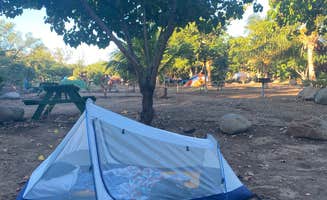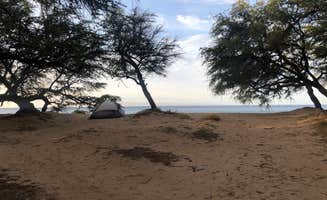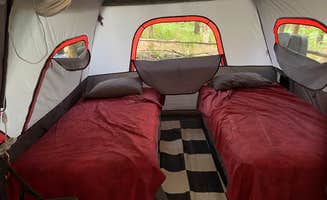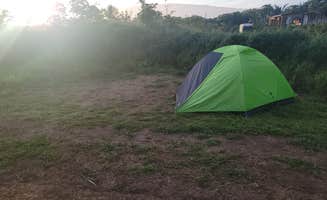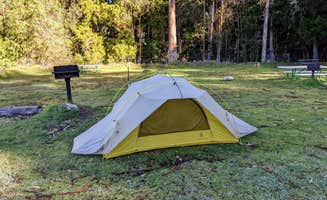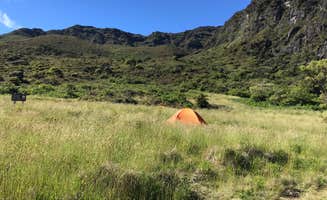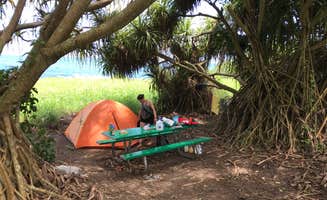Dispersed camping near Lahaina, Hawaii offers options from sea level to 7,000-foot elevations across the western and upcountry regions of Maui. Winter camping along coastal sites requires preparation for occasional strong winds from November through March, while summer months bring more consistent conditions. Campsite availability ranges from well-managed commercial operations to more remote backcountry locations requiring permits.
What to do
Sunrise hiking at Haleakalā: Head to Hosmer Grove Campground for ideal sunrise access. "Early risers will appreciate the short drive to the top of Haleakala for amazing sunrises... Sun sets are spectacular as well," notes Kaine'e. Instead of competing with day visitors at the summit, consider alternatives as one camper advises: "In one of the guidebooks it recommended skipping the summit and going to one of the other lookout points to watch the sunrise where it's way less crowded."
Water sports at beach sites: The beach access at Papalaua Wayside Park provides ideal conditions for multiple water activities. "The camping is all beach camping right along the beautiful coast. Trees for shade, porta potties for bathrooms," explains one camper. Another visitor mentioned, "We opted for van camping so we were close to the road so it was noisier than if we'd been closer to the beach. Due to rain and needing to drive around other vehicles, the site was hard to get in and out of but we really enjoyed the location and ease."
Forest exploration: For a completely different experience from coastal camping, visit the mountain forests at Polipoli Spring State Recreation Area. "Polipoli does not even feel like you're in Hawaii! I mean this in the best way possible! Hawaii is amazing with all the beaches, ocean views, and sunshine. Polipoli is high upcountry tucked in the clouds and forests," writes Savannah G. The area features unique hiking opportunities including "abandoned ranger stations which are super cool! It also starts out by bringing you past these crazy caves!"
What campers like
Outdoor shower facilities: The facilities at Camp Olowalu receive consistent praise for their unique design and functionality. One visitor reported, "The outdoor showers at Camp Olowalu resort are worth the stay in and of themselves. They are works of art, frankly." Another camper confirmed, "The amenities are GREAT. The showers are enclosed, they have benches and hooks to put your things down on and they have hot and cold water."
Varied accommodation options: Many campsites near Lahaina offer multiple lodging choices. At Camp Olowalu, one guest described their experience: "My husband and I opted for the Mountain View Tentalows, so basically a tent area next to the beach. You can also rent a small cabin, or camp with your own tent beachside. We rented a the Tentalow with 2 beds, and had plenty of room for my husband and I."
Low light pollution for stargazing: Camping areas away from developed towns provide excellent night sky viewing. "Little light pollution, great for star gazing," reports Esther L. about the Tentalow accommodations at Camp Olowalu. The higher elevation campsites offer particularly clear views on nights without cloud cover.
What you should know
Overnight temperature variations: Pack appropriate layers, particularly for higher elevations. At Holua Primitive Wilderness Campsite, campers advise: "Bring layers and warm rated sleeping bags as it will easily get down to sub 40's at night." Another camper added, "It was August and I don't know what the temperature was, but I know I could see my breath when I exhaled!"
Wildlife encounters: Free-roaming animals are common at many campsites. At Camp Olowalu, one camper warns, "Don't turn your back on the chickens. They'll get into your vehicle if given the chance." Roosters also impact sleep quality as noted by a visitor: "Unfortunately camp olowalu is overrun by roosters, so you aren't going to get a good night of sleep."
Security considerations: Some camping areas have reported theft issues. One visitor to Papalaua Wayside Park shared: "Worst of all: a serious theft problem. Tent stolen. Umbrella stolen. Ladies before me had all their passports stolen."
Tips for camping with families
Water access versus privacy trade-offs: When camping with children, consider how close sites are to beach access. At Camp Olowalu, a reviewer noted: "The tent sites are amazing, though perhaps spaced a little close together between the main camp and the shoreline, but with beach access so close, and the surrounding environment so beautiful it's easy to forget."
Toilet facilities vary widely: Plan accordingly for different bathroom situations. At Papalaua Wayside Park, one camper warned to "Bring your own Toilet Paper as it seems to go fast." This contrasts with more developed sites like Camp Olowalu where "bathrooms are REAL bathrooms, with flushing toilets, running water sinks, toilet paper, mirrors, hooks and a ledge to put your things down on."
Morning noise realities: Prepare children for early wake-ups from wildlife and traffic. "About 5am, the feral roosters chime in to have their say, and the traffic begins. Long story short...bring earplugs!" advises one Camp Olowalu visitor.
Tips from RVers
Limited hookup availability: Most campsite near Lahaina lack traditional RV hookups. At Kanaha Beach Park, facilities are minimal with one camper noting: "This campground is permanently closed," though day use continues.
Alternative van camping options: Campervan users can find designated areas at some sites. At Camp Olowalu, one camper described: "We camped in the camper van area, and while there was plenty of room and a nice picnic table, but it was exactly like camping on the perimeter of a large parking lot. Since all the tent sites are walk-in, those guests frequently return to their vehicles to retrieve belongings."
Parking challenges: Navigating larger vehicles requires planning. One Papalaua Wayside Park visitor explained: "Due to rain and needing to drive around other vehicles, the site was hard to get in and out of but we really enjoyed the location and ease."


